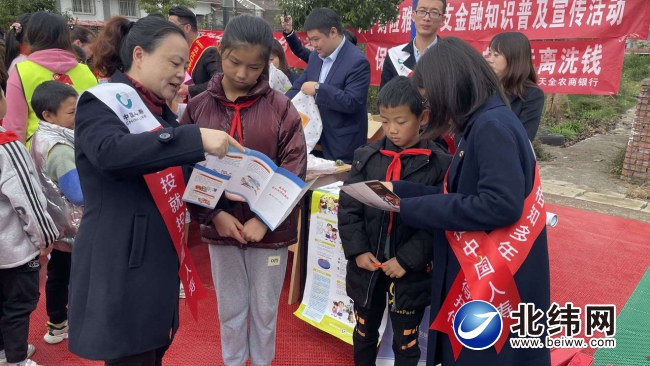China flags 'fatal flaw' in NASA’s hypersonic aerodynamics software
By subscribing, you agree to our Terms of Use and Policies You may unsubscribe at any time.
Chinese scientists have allegedly discovered a major flaw with one of NASA’s main hypersonic aerodynamics modeling software programs.
The scientists claim that the Vulcan-CFD software can not accurately model the complex chemistry at high speeds on the hypersonic vehicle’s surface.
Used by NASA’s Langley Research Centre, reliance on it could lead to “inevitably erroneous outcomes,” the Chinese team has said.
This is especially the case when it comes to simulating high-temperature ablation, South China Morning Post (SCMP)reported on Monday.
Vulcan-CFD’s issues have been highlighted in a new paper by the Hypersonic Technology Laboratory of the National University of Defence Technology. This peer-reviewed paper was published in the Chinese academic journal Acta Aerodynamica Sinicaon March 14.
Led by Professor Liu Jun, the paper explains that when an aircraft’s speed exceeds Mach 5, intense friction with the air generates sizzling temperatures that can ionize air molecules and spark chemical reactions. If not modeled accurately, this could impact the effective development of working hypersonic vehicles.
Vulcan-CFD could be flawed
These complex reactions may cause erosion on the aircraft surface and affect the surrounding air temperature or density. Inaccurate modeling data can result in significant consequences for aircraft safety and performance.
NASA’s Vulcan-CFD is a highly advanced computational fluid dynamics (CFD) software developed to simulate compressible and turbulent Navier-Stokes flows. This software is designed to handle complex simulations involving finite-rate chemistry and thermodynamic non-equilibrium processes.
Designing hypersonic vehicles is highly intricate, involving accurately modeling and understanding various physical phenomena. These phenomena include but are not limited to aerodynamic heating, chemical reactions within the flow, shock wave interactions, and boundary layer effects.
So, modeling software like Vulcan-CFD is potent in any engineering team’s toolkit. However, while Vulcan-CFD is used to design and analyze hypersonic vehicles, it is not the only tool available to aerospace engineers and researchers.
Due to its sensitive nature, Vulcan-CFD is subject to export controls, and its distribution is limited to within American borders.
However, NASA released an academic paper in 2020 introducing its working principles and some of the key equations it employs.
According to Liu and his team, the software is widely recognized within the industry. Using these, Lui and his team took a deep dive into the inner workings of Vulcan-CFD and made their alleged discoveries.
Reliance on it could be delaying American hypersonics
If true, this could explain why America’s hypersonic program seems to lag behind on the international stage. For example, on April 3, North Korea announced the successful test of a land-based hypersonic gliding missile called Mars 16B.
Meanwhile, the US Army’s Long-Range Hypersonic Weapon (LRHW) failed consecutively in 2021 and 2022, resulting in the scrapping or postponement of the subsequent three planned launches.
The U.S. Congressional Budget Office has reported that “the fundamental remaining challenge involves managing the extreme heat that hypersonic missiles are exposed to by traveling at high speeds in the atmosphere for most of their flight.”
“Shielding hypersonic missiles’ sensitive electronics, understanding how various materials perform, and predicting aerodynamics at sustained temperatures as high as 3,000 degrees Fahrenheit require extensive flight testing. Tests are ongoing, but failures in recent years have delayed progress,” it added.
If Vulcan-CFD is heavily relied upon, and the Chinese research team’s findings are correct, this could mean that U.S. hypersonic research teams may need to change strategy to catch up.
相关文章

How much will PCB's Champions Cup mentors be paid?
ListentoarticleThe Pakistan Cricket Board (PCB) has appointed five distinguished mentors for the upc2024-09-22 銆€銆€涓浗灞变笢缃?2鏈?7鏃ヨ12鏈?7鏃ワ紝涓浗宸ュ晢閾惰鍦ㄥ寳浜妇鍔為灞?ldquo;宸ヨ灏忓井瀹㈡埛鑺?rdquo;锛屽彂甯?ldquo;涓囧灏忓井鎴愰暱璁″垝”2024-09-22
銆€銆€涓浗灞变笢缃?2鏈?7鏃ヨ12鏈?7鏃ワ紝涓浗宸ュ晢閾惰鍦ㄥ寳浜妇鍔為灞?ldquo;宸ヨ灏忓井瀹㈡埛鑺?rdquo;锛屽彂甯?ldquo;涓囧灏忓井鎴愰暱璁″垝”2024-09-22 “待到春暖花开时,我们畅享欢聚时刻!”网友“碧海蓝天”在青岛啤酒微信公众号的留言,获得了大家纷纷点赞,这也道出了不少消费者对近期青岛啤酒推出&ldquo2024-09-22
“待到春暖花开时,我们畅享欢聚时刻!”网友“碧海蓝天”在青岛啤酒微信公众号的留言,获得了大家纷纷点赞,这也道出了不少消费者对近期青岛啤酒推出&ldquo2024-09-22 从五月的风到松花江畔,从雾凇之都到秋醉庐山,从铁血荆州到古都大同,奔跑、欢聚、音乐、畅饮……在这个马拉松狂欢季,追赶梦想,用脚步丈量祖国的美好与辽阔。作为马拉松赛事的资深赞2024-09-22
从五月的风到松花江畔,从雾凇之都到秋醉庐山,从铁血荆州到古都大同,奔跑、欢聚、音乐、畅饮……在这个马拉松狂欢季,追赶梦想,用脚步丈量祖国的美好与辽阔。作为马拉松赛事的资深赞2024-09-22- Over the course of the last month, we have been purposefully using a 4K OLED monitor in ways that wi2024-09-22
 本报讯10月22日,天全县新华乡永安村童伴之家欢声笑语。由团市委、市金融团工委、中国人寿雅安分公司等联合开展的“为奉献者奉献”雅安共青团生命教育主题活动在这里举行。活动启动仪式上,中国人寿雅安分公司为2024-09-22
本报讯10月22日,天全县新华乡永安村童伴之家欢声笑语。由团市委、市金融团工委、中国人寿雅安分公司等联合开展的“为奉献者奉献”雅安共青团生命教育主题活动在这里举行。活动启动仪式上,中国人寿雅安分公司为2024-09-22

最新评论